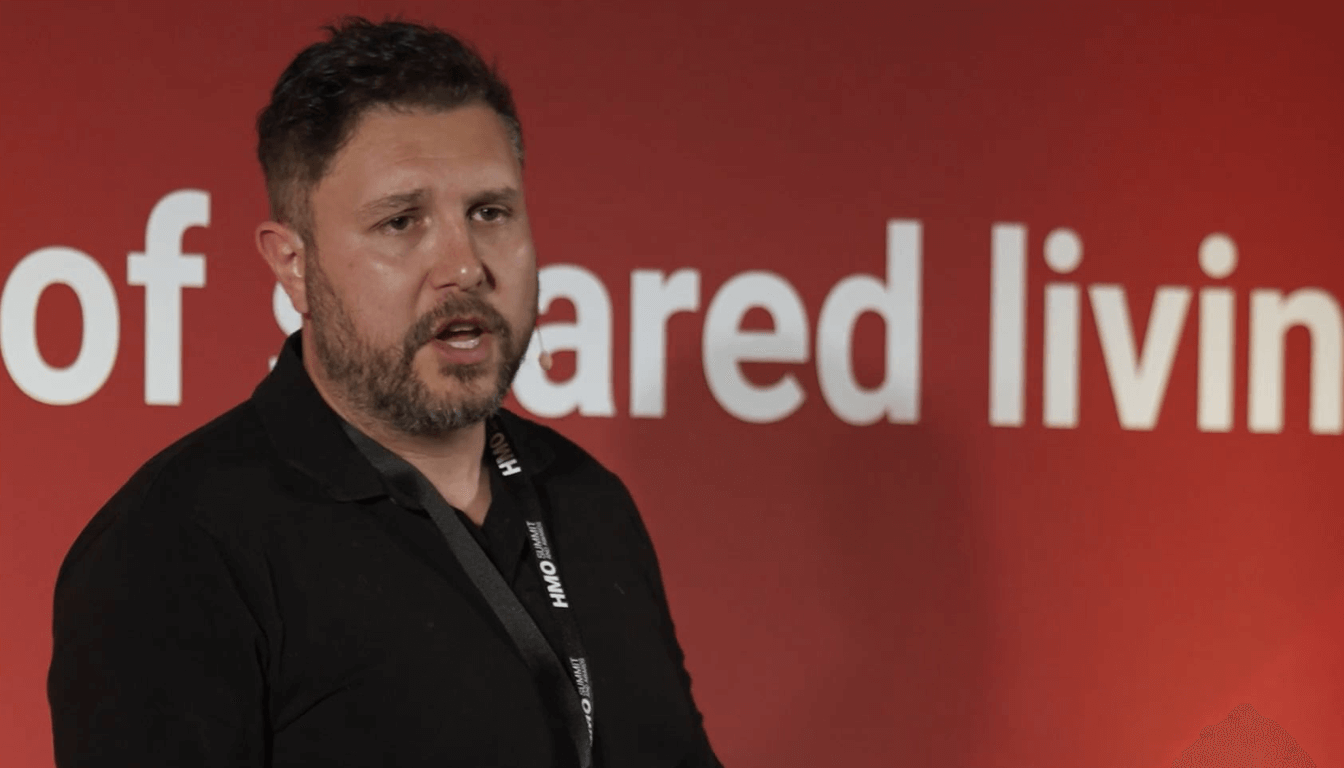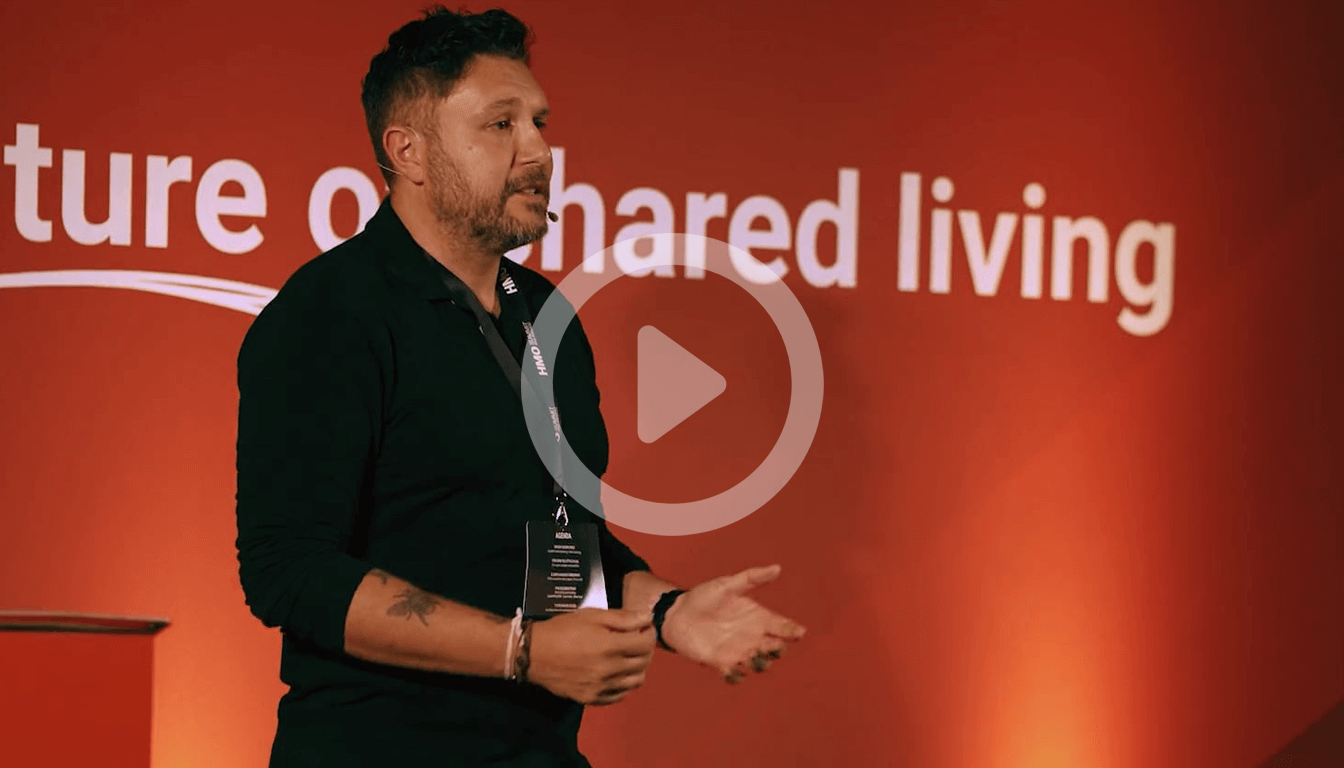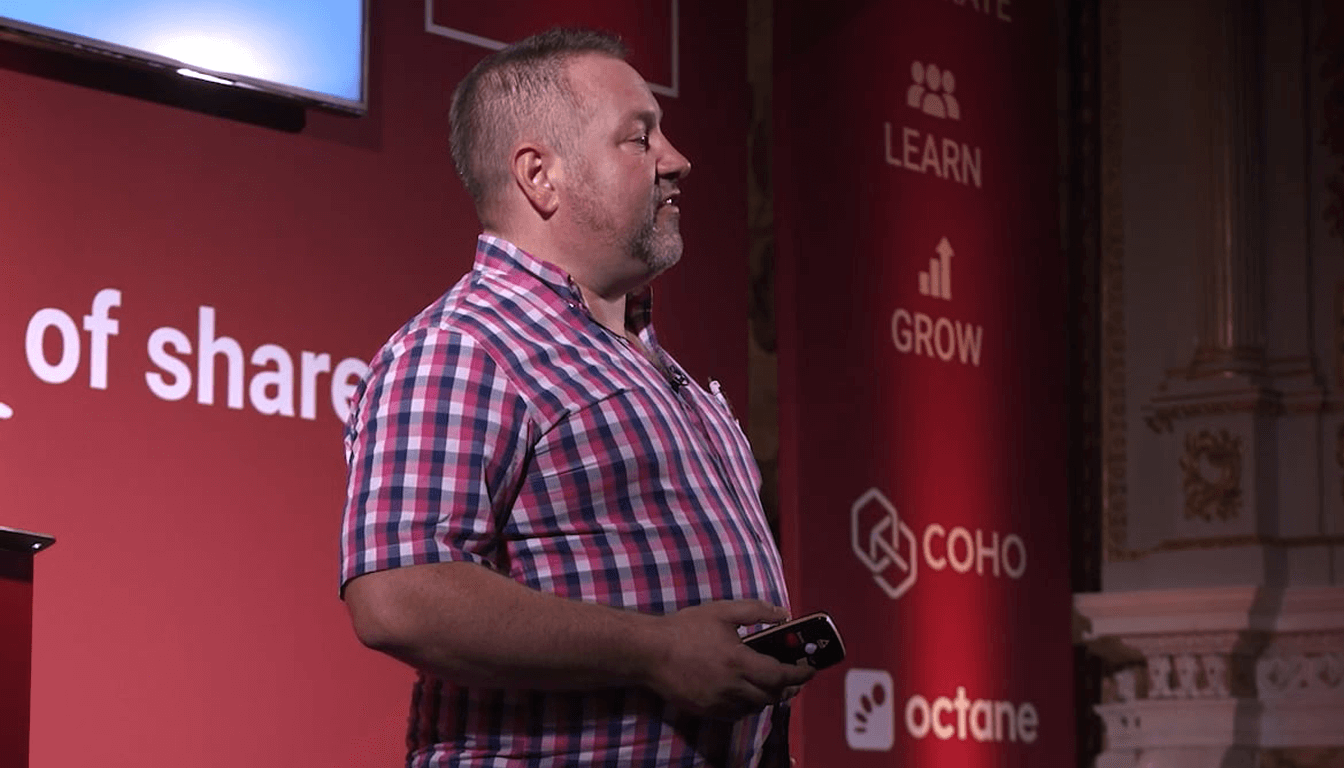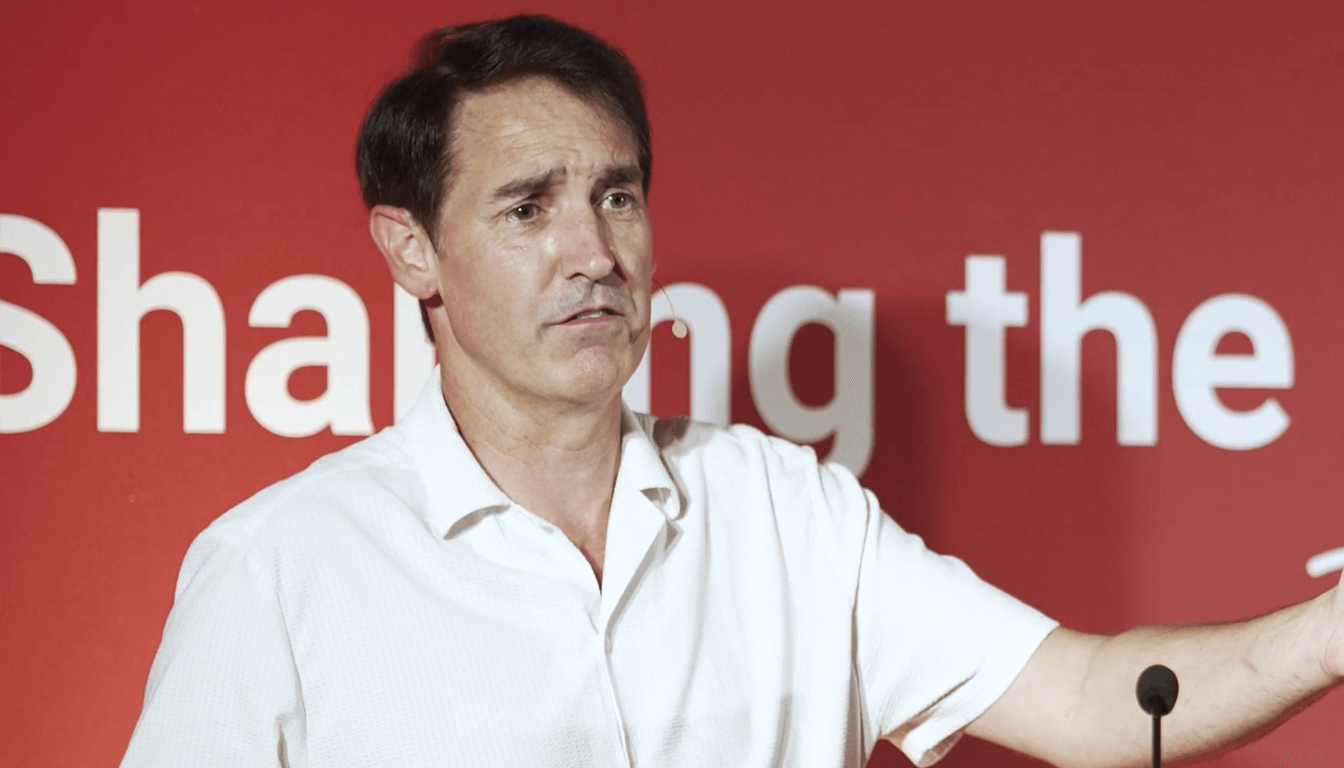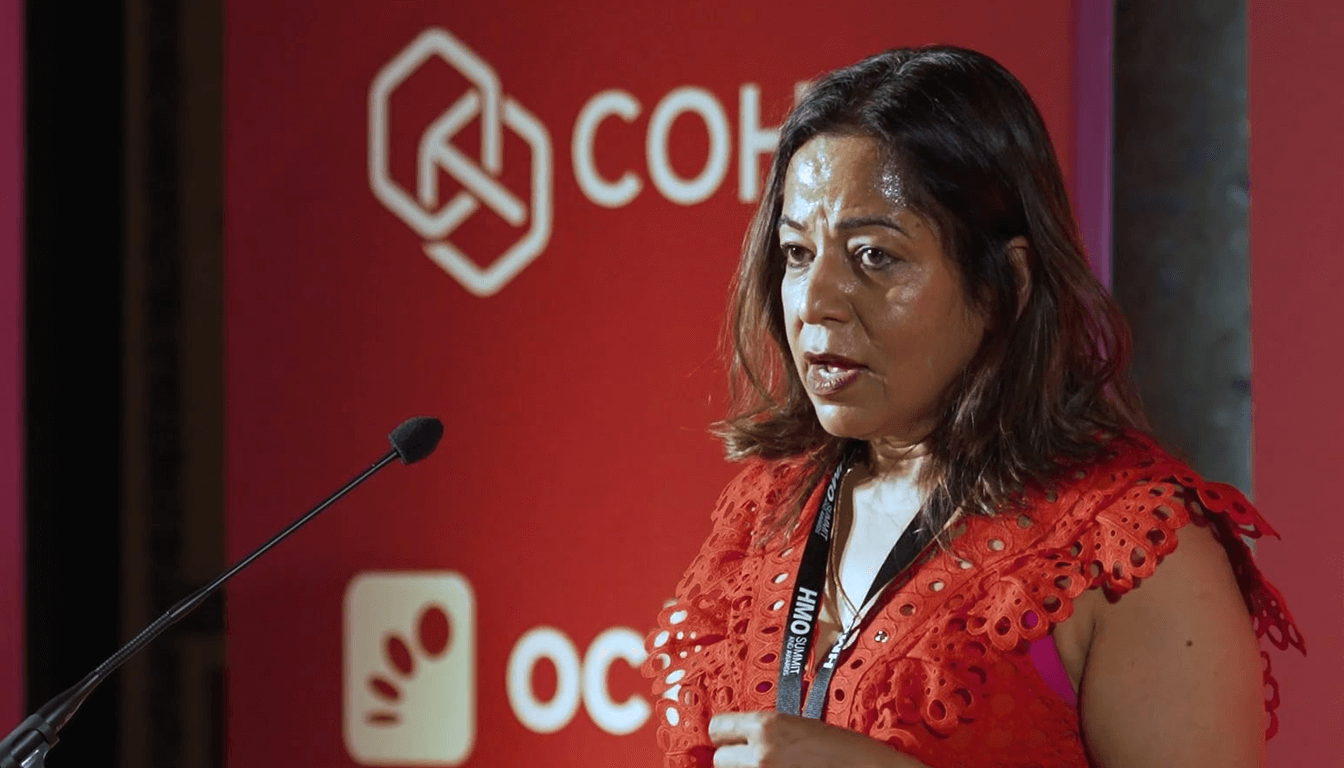Fear is an invisible tax. It makes good investors sit on the sidelines, second-guessing obvious opportunities until the moment has passed. At the HMO Summit, Sam Norris,founder of Grand Union Finance,told two short stories that make the point so sharply you’ll remember them long after you forget the finer details of any spreadsheet. One client had the world-domination plan and an attitude that made success inevitable on paper, but he let a slightly higher borrowing rate stop him from acting. The other was a fresh graduate with a modest salary who treated the interest rate as background noise and focused on the cash-flow picture. Guess which one built a thriving HMO portfolio.
If you’re an investor who loses deals because “it’s too expensive,” this is the blog for you. Read on: this is as much about mindset as it is about numbers.
The central lesson: rates are not the only number that matters
Sam starts with a simple question he asks every client: “What does your property business look like when it’s finished?” The question forces perspective. If you want to be the UK’s biggest property investor, every decision should be judged by whether it moves you toward that finished picture. If your plan is to build a handful of HMO properties to produce steady passive income, then the yardsticks change.
Interest rates are important. But they aren’t the end of the analysis. What matters more is how borrowing cost interacts with yield, cash-flow, and your long-term plan. Sam’s two stories show the contrast perfectly.
In the first story the investor had experience, capital and a sourcing pipeline. He could have leveraged existing London assets, pulled capital out, and deployed it into higher-yielding stock up north. Sam found him a product: yes, the interest rate was higher than the client’s existing cheap debt, but the spread between the HMO yield and the borrowing cost was strongly positive. The client refused,the headline rate felt “too expensive,” so the deal died.
In the second story the new investor faced a lender who would only offer a 5.5% product,a rate that would have given many nervous people pause. But the young buyer focused on the actual monthly numbers: rents, mortgage payment, operating costs and likely cash flow. He compared the HMO route to the alternative of buying a lower-yield single let and saw that, even at a higher interest rate, the HMO produced materially better monthly returns. He executed the deal and later built a portfolio.
The conclusion is blunt: fear of interest rates kills deals; cash-flow thinking closes them.
Why rates feel scarier than they should
People anchor to what they know. If you refinanced your buy-to-let at 1.9% and someone offers you 3.5%, your gut screams “too expensive.” But anchoring ignores context. An HMO generating 8–10% gross yield looks very different to a single-let returning 3–4%. The same percentage difference on the debt side can mean very different things in terms of profits and return on effort.
There are three common cognitive mistakes that make rates look scarier than reality:
- Anchoring to past low rates. Humans hate loss; moving from cheap debt to higher debt feels like loss even when the business outcome improves.
- Confusing headline percentage with cash-flow outcome. People obsess over a percent figure instead of the monthly P&L.
- Ignoring opportunity cost. The true question is not whether the new rate is “expensive” in isolation, but whether the capital deployed elsewhere would make you more, less, or about the same return for your time and risk.
Sam’s remedy is simple: always translate an interest rate into its monthly cash effect and compare that to alternative uses of the same money (and your time).
A practical decision framework: think in cash flow and outcomes, not just rates
When evaluating a deal, run two parallel mental models: one for the money and one for your mission.
On the money side, calculate the monthly net position. Start with the rent you expect to receive, subtract mortgage payments at the offered rate, then subtract expected operating costs (management fees, repairs, utilities where relevant, void allowance, insurance, licencing costs, etc.). What remains is your monthly pre-tax cash flow. That number is the first and most honest truth the deal will tell you.
On the mission side, ask what the asset contributes to your finished business picture. Does it scale? Is it a one-off that allows you to get experience? Does it free up capital or time later? Some deals are less about immediate cash and more about gaining a position in a growth market or getting a replicable template.
Bring the two together. If the monthly cash flow is positive and the asset advances your strategic position, the higher headline rate is probably irrelevant. If your model shows the deal still makes sense on a return-on-effort basis,i.e., the time you put in yields a worthwhile return,act.
Sam’s young client did exactly this. The monthly numbers stacked up even at 5.5%. The loan was more expensive, but the yield and the operational model made up for it. The student-turned-investor focused on outcomes and moved forward.
How to act with confidence (the playbook)
Acting with confidence isn’t bravado. It’s structure. Here’s a tested, pragmatic way to screen and choose deals faster and more rationally:
First, always begin with a clear finish line. Know whether you want steady cash flow, capital growth, a portfolio to exit to a fund, or something else. The finish line changes every follow-up decision.
Second, translate the headline interest rate into monthly cash flow. Write the monthly mortgage figure into your spreadsheet, then work the business model from that monthly number. The emotional reaction to a percent number fades quickly once you see the monthly arithmetic.
Third, model alternatives. Ask: if I didn’t buy this, what would I buy instead? If the same deposit deployed in an alternative asset gives you less monthly cash or less strategic value, that helps you make a decision.
Fourth, factor in your return on time and effort. A deal that requires extensive conversions, long planning, and high management time must offer commensurate reward. Sometimes a simpler, lower-yield asset that requires no active management is the better choice for a particular owner; other times the active investor should take the conversion route because the payoff is much larger.
Fifth, run the sensitivity. Slight changes to rent, voids, or interest should not catastrophically change your outcome. If they do, either the deal is too marginal or you need a mitigation plan (e.g., conversion to a different tenant type or securing a fixed-rate period).
Sixth, cultivate optionality. If you can buy with an exit route (convert to single let, sell to a fund, re-finance after improvements), your risk profile improves. Many of the best HMO investors think in terms of options,buy, add value, then re-finance or sell,not lock into a single destiny.
Finally, partner with advisors who ask the right questions. Sam’s job as a broker is to translate lender language into client outcomes. Use advisers who will talk you through the monthly cash flow, the lender’s quirks, and the practicalities rather than focusing only on rates.
Mindset shifts that actually work
There are simple mental pivots that will stop fear from killing your deals:
- Replace obsession with rate with curiosity about spread. Instead of yelling at a lender, ask: what is the spread between expected gross yield and cost of debt, after realistic expenses?
- Think in terms of business outcomes. If a higher-rate loan allows you to buy a property that increases your portfolio yield or provides a replicable conversion model, it’s an enabler.
- Measure decisions by return-on-effort. Time is your scarcest resource. If a deal yields high cash per hour of work, it deserves your attention even if the interest looks a little higher.
- Use small experiments. If you’re risk-averse, structure the first few deals as pilots. Learn the local market by doing one house well rather than assuming all deals must be perfect from day one.
When to say no
Acting with confidence is not the same as acting recklessly. There are perfectly good reasons to walk away from a deal: if your model shows negative monthly cash after realistic costs; if the local market lacks the demand type you need; if your operational bandwidth is already full and the marginal property would stretch you dangerously thin. The point is to say no from analysis, not from panic about a percentage figure.
The reality check Sam gave: a few reminders
Sam’s client vignettes are vivid for a reason. They force the practical truth into your field of vision: one investor with tools and opportunity failed to act because a rate felt “too expensive.” Another leaned into the numbers and the mission and built a business. The moral is not to ignore rate risk; it is to stop letting headline percentages rule the decision.
If you want one concrete habit to adopt tomorrow: the next time you see a mortgage rate you don’t like, pause long enough to convert it into a monthly mortgage payment and then subtract that payment from projected rent. Add in conservative allowances for voids and maintenance and then compare the result to the alternative uses of that capital. The numbers will tell you whether you are being rational or merely fearful.
Closing: confidence isn’t magic,it’s process
Confidence on property deals is not swagger; it’s a repeatable process. Define your end goal, model the cash flow, compare alternatives, factor in your time and operational capacity, and make decisions that pass both the spreadsheet and the strategic test. When in doubt, small experiments and optionality let you act while preserving upside.
Sam’s final, understated plea to the room was this: change your metric. Don’t let a percentage be your anchor; let the business outcome be your guide. When you can do that consistently, fear will stop killing your deals and your opportunities will start multiplying.
Fear is an invisible tax. It makes good investors sit on the sidelines, second-guessing obvious opportunities until the moment has passed. At the HMO Summit, Sam Norris,founder of Grand Union Finance,told two short stories that make the point so sharply you’ll remember them long after you forget the finer details of any spreadsheet. One client had the world-domination plan and an attitude that made success inevitable on paper, but he let a slightly higher borrowing rate stop him from acting. The other was a fresh graduate with a modest salary who treated the interest rate as background noise and focused on the cash-flow picture. Guess which one built a thriving HMO portfolio.
If you’re an investor who loses deals because “it’s too expensive,” this is the blog for you. Read on: this is as much about mindset as it is about numbers.
The central lesson: rates are not the only number that matters
Sam starts with a simple question he asks every client: “What does your property business look like when it’s finished?” The question forces perspective. If you want to be the UK’s biggest property investor, every decision should be judged by whether it moves you toward that finished picture. If your plan is to build a handful of HMO properties to produce steady passive income, then the yardsticks change.
Interest rates are important. But they aren’t the end of the analysis. What matters more is how borrowing cost interacts with yield, cash-flow, and your long-term plan. Sam’s two stories show the contrast perfectly.
In the first story the investor had experience, capital and a sourcing pipeline. He could have leveraged existing London assets, pulled capital out, and deployed it into higher-yielding stock up north. Sam found him a product: yes, the interest rate was higher than the client’s existing cheap debt, but the spread between the HMO yield and the borrowing cost was strongly positive. The client refused,the headline rate felt “too expensive,” so the deal died.
In the second story the new investor faced a lender who would only offer a 5.5% product,a rate that would have given many nervous people pause. But the young buyer focused on the actual monthly numbers: rents, mortgage payment, operating costs and likely cash flow. He compared the HMO route to the alternative of buying a lower-yield single let and saw that, even at a higher interest rate, the HMO produced materially better monthly returns. He executed the deal and later built a portfolio.
The conclusion is blunt: fear of interest rates kills deals; cash-flow thinking closes them.
Why rates feel scarier than they should
People anchor to what they know. If you refinanced your buy-to-let at 1.9% and someone offers you 3.5%, your gut screams “too expensive.” But anchoring ignores context. An HMO generating 8–10% gross yield looks very different to a single-let returning 3–4%. The same percentage difference on the debt side can mean very different things in terms of profits and return on effort.
There are three common cognitive mistakes that make rates look scarier than reality:
- Anchoring to past low rates. Humans hate loss; moving from cheap debt to higher debt feels like loss even when the business outcome improves.
- Confusing headline percentage with cash-flow outcome. People obsess over a percent figure instead of the monthly P&L.
- Ignoring opportunity cost. The true question is not whether the new rate is “expensive” in isolation, but whether the capital deployed elsewhere would make you more, less, or about the same return for your time and risk.
Sam’s remedy is simple: always translate an interest rate into its monthly cash effect and compare that to alternative uses of the same money (and your time).
A practical decision framework: think in cash flow and outcomes, not just rates
When evaluating a deal, run two parallel mental models: one for the money and one for your mission.
On the money side, calculate the monthly net position. Start with the rent you expect to receive, subtract mortgage payments at the offered rate, then subtract expected operating costs (management fees, repairs, utilities where relevant, void allowance, insurance, licencing costs, etc.). What remains is your monthly pre-tax cash flow. That number is the first and most honest truth the deal will tell you.
On the mission side, ask what the asset contributes to your finished business picture. Does it scale? Is it a one-off that allows you to get experience? Does it free up capital or time later? Some deals are less about immediate cash and more about gaining a position in a growth market or getting a replicable template.
Bring the two together. If the monthly cash flow is positive and the asset advances your strategic position, the higher headline rate is probably irrelevant. If your model shows the deal still makes sense on a return-on-effort basis,i.e., the time you put in yields a worthwhile return,act.
Sam’s young client did exactly this. The monthly numbers stacked up even at 5.5%. The loan was more expensive, but the yield and the operational model made up for it. The student-turned-investor focused on outcomes and moved forward.
How to act with confidence (the playbook)
Acting with confidence isn’t bravado. It’s structure. Here’s a tested, pragmatic way to screen and choose deals faster and more rationally:
First, always begin with a clear finish line. Know whether you want steady cash flow, capital growth, a portfolio to exit to a fund, or something else. The finish line changes every follow-up decision.
Second, translate the headline interest rate into monthly cash flow. Write the monthly mortgage figure into your spreadsheet, then work the business model from that monthly number. The emotional reaction to a percent number fades quickly once you see the monthly arithmetic.
Third, model alternatives. Ask: if I didn’t buy this, what would I buy instead? If the same deposit deployed in an alternative asset gives you less monthly cash or less strategic value, that helps you make a decision.
Fourth, factor in your return on time and effort. A deal that requires extensive conversions, long planning, and high management time must offer commensurate reward. Sometimes a simpler, lower-yield asset that requires no active management is the better choice for a particular owner; other times the active investor should take the conversion route because the payoff is much larger.
Fifth, run the sensitivity. Slight changes to rent, voids, or interest should not catastrophically change your outcome. If they do, either the deal is too marginal or you need a mitigation plan (e.g., conversion to a different tenant type or securing a fixed-rate period).
Sixth, cultivate optionality. If you can buy with an exit route (convert to single let, sell to a fund, re-finance after improvements), your risk profile improves. Many of the best HMO investors think in terms of options,buy, add value, then re-finance or sell,not lock into a single destiny.
Finally, partner with advisors who ask the right questions. Sam’s job as a broker is to translate lender language into client outcomes. Use advisers who will talk you through the monthly cash flow, the lender’s quirks, and the practicalities rather than focusing only on rates.
Mindset shifts that actually work
There are simple mental pivots that will stop fear from killing your deals:
- Replace obsession with rate with curiosity about spread. Instead of yelling at a lender, ask: what is the spread between expected gross yield and cost of debt, after realistic expenses?
- Think in terms of business outcomes. If a higher-rate loan allows you to buy a property that increases your portfolio yield or provides a replicable conversion model, it’s an enabler.
- Measure decisions by return-on-effort. Time is your scarcest resource. If a deal yields high cash per hour of work, it deserves your attention even if the interest looks a little higher.
- Use small experiments. If you’re risk-averse, structure the first few deals as pilots. Learn the local market by doing one house well rather than assuming all deals must be perfect from day one.
When to say no
Acting with confidence is not the same as acting recklessly. There are perfectly good reasons to walk away from a deal: if your model shows negative monthly cash after realistic costs; if the local market lacks the demand type you need; if your operational bandwidth is already full and the marginal property would stretch you dangerously thin. The point is to say no from analysis, not from panic about a percentage figure.
The reality check Sam gave: a few reminders
Sam’s client vignettes are vivid for a reason. They force the practical truth into your field of vision: one investor with tools and opportunity failed to act because a rate felt “too expensive.” Another leaned into the numbers and the mission and built a business. The moral is not to ignore rate risk; it is to stop letting headline percentages rule the decision.
If you want one concrete habit to adopt tomorrow: the next time you see a mortgage rate you don’t like, pause long enough to convert it into a monthly mortgage payment and then subtract that payment from projected rent. Add in conservative allowances for voids and maintenance and then compare the result to the alternative uses of that capital. The numbers will tell you whether you are being rational or merely fearful.
Closing: confidence isn’t magic,it’s process
Confidence on property deals is not swagger; it’s a repeatable process. Define your end goal, model the cash flow, compare alternatives, factor in your time and operational capacity, and make decisions that pass both the spreadsheet and the strategic test. When in doubt, small experiments and optionality let you act while preserving upside.
Sam’s final, understated plea to the room was this: change your metric. Don’t let a percentage be your anchor; let the business outcome be your guide. When you can do that consistently, fear will stop killing your deals and your opportunities will start multiplying.

